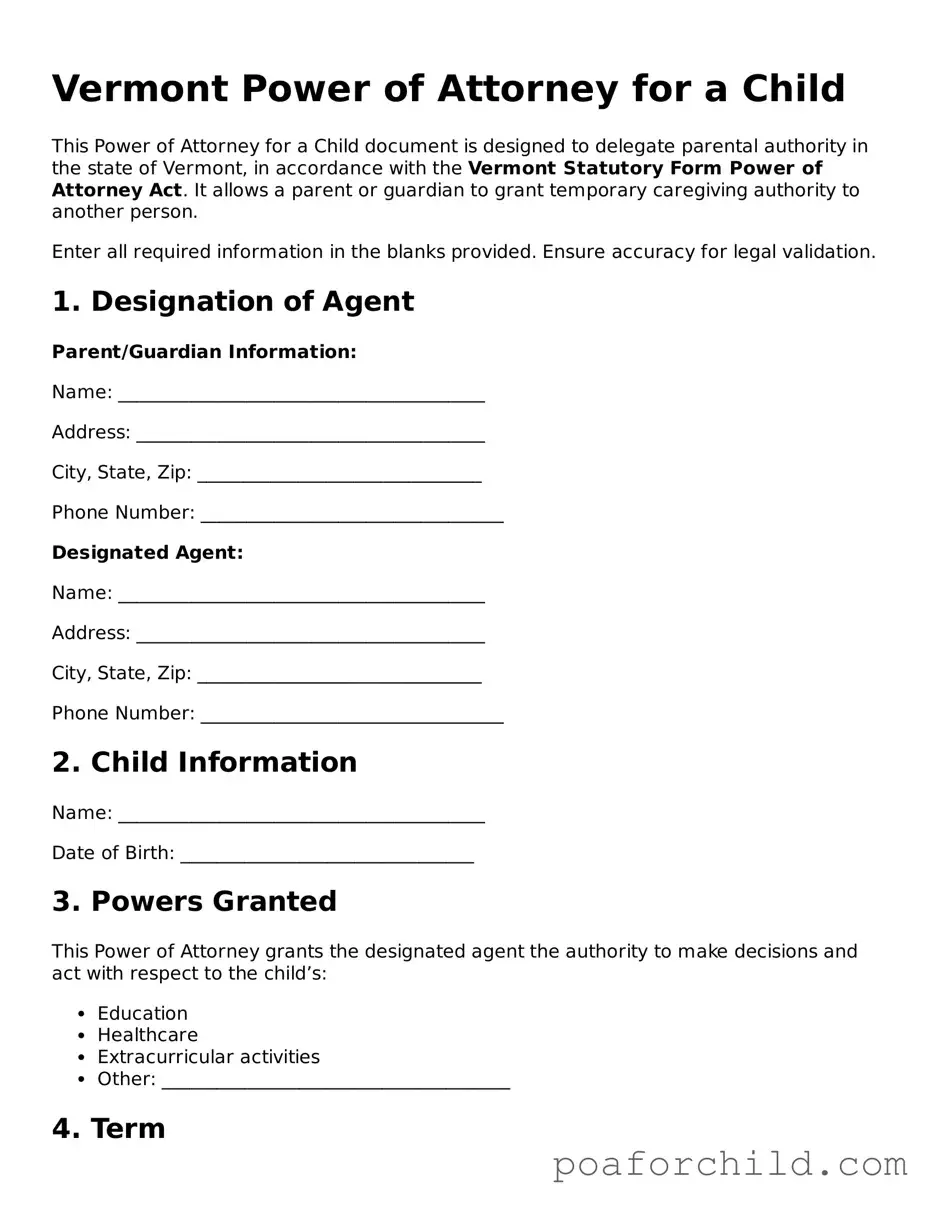Detailed Guide for Using Vermont Power of Attorney for a Child
Preparing a Vermont Power of Attorney (POA) for a child enables a parent to legally authorize another person to make decisions and take actions regarding their child's welfare in their stead. This could be necessary for various reasons, such as the parent's absence due to travel, health issues, or other commitments. The process to correctly fill out this form is straightforward, but it's essential to pay close attention to detail and ensure all the information is accurate to avoid any potential issues.
- Gather necessary information including the child’s full name and date of birth, the parent(s)' or legal guardian(s)' full names and contact information, and the full name and contact details of the person being granted POA.
- Locate the appropriate section at the beginning of the form to enter the full legal names and addresses of the parent(s) or legal guardian(s) granting the power of attorney.
- In the designated area, write the full legal name of the child for whom the POA is being created, along with their date of birth.
- Identify the section where you need to input the name and contact details of the individual being granted POA. Make sure to spell their name correctly and include a current address and phone number.
- Specify the duration of the POA. Some forms require you to enter both a start and an end date. If the form allows for an indefinite period, and that’s what’s desired, follow the instructions on how to indicate that preference.
- Look for any sections on the form that outline specific authorities being granted with the POA. Read these carefully to ensure they align with the parent’s wishes. If there are options to add additional powers, consider whether these are necessary and include them as appropriate.
- Many forms will require the signature(s) of the parent(s) or legal guardian(s) in front of a witness or notary. Locate the signature section and follow the instructions precisely. Ensure that a notary or the required number of witnesses is present during signing, if needed.
- Review the form in its entirety to ensure all information is correct and that no sections have been mistakenly skipped.
- File the completed form as instructed. This may involve submitting it to a specific government office, giving copies to relevant parties, or simply retaining it for personal records.
Once the Power of Attorney for a child in Vermont is properly filled out and filed as needed, the designated individual will have the legal authority to make decisions within the scope outlined in the document. It's crucial for all parties involved to understand the responsibilities and limits of this authority to ensure the child's best interests are always the priority. If there are ever any doubts or concerns about completing the form, consulting a legal professional can provide clarity and peace of mind.
